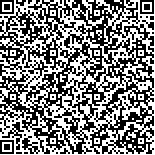| 引用本文: | 裘一婧,贾彦博,方玲,胡程,曾金林.超声酶水解提取/高效液相色谱-原子荧光光谱联用法测定动物源性中药中的砷形态[J].中国现代应用药学,2019,36(23):2943-2948. |
| QIU Yijing,JIA Yanbo,FANG Ling,HU Cheng,ZENG Jinlin.Determination of Arsenic Speciation by HPLC Combined with Atomic Fluorescence Spectrometry (HPLC-AFS) Using Ultrasound and Enzymatic Hydrolysis in Animal Derived Traditional Chinese Medicines[J].Chin J Mod Appl Pharm(中国现代应用药学),2019,36(23):2943-2948. |
|
| 本文已被:浏览 1975次 下载 1114次 |

码上扫一扫! |
|
|
| 超声酶水解提取/高效液相色谱-原子荧光光谱联用法测定动物源性中药中的砷形态 |
|
裘一婧1, 贾彦博1, 方玲2,3, 胡程1, 曾金林1
|
|
1.杭州市食品药品检验研究院, 杭州 310022;2.浙江康恩贝制药股份有限公司, 杭州 310022;3.浙江省中药制药技术重点实验室, 杭州 310052
|
|
| 摘要: |
| 目的 采用液相色谱-原子荧光光谱(HPLC-AFS)联用技术对动物源性中药中一甲基砷酸(monomethylarsine,MMA)、二甲基砷酸(dimethyarsine,DMA)、三价砷[As(Ⅲ)]、五价砷[As(V)]的形态进行研究。方法 样品中加入pH 2.5的胃蛋白酶液,于55℃超声20 min,6 000 r·min-1离心3 min,取其上清液,过滤进样。采用Hamilton PPRP-X100阴离子交换色谱柱(150 mm×4.6mm,5 μm)分离,1 mmol·L-1磷酸二氢铵溶液(pH 8.5),20 mmol·L-1磷酸二氢铵溶液(pH 7.0)体系组成的流动相按一定比例进行梯度洗脱,流速为1.0 mL·min-1,进样量为100 μL。结果 4种砷形态在13 min内完成分离。MMA、DMA、As(Ⅲ)、As(V)的检出限分别为0.01,0.01,0.01和0.02 mg·kg-1,样品中加标量为0.03~0.1 mg·kg-1时,4种砷化合物的回收率为93.4%~105.4%,精密度RSD为0.8%~4.4%。结论 本研究建立的超声酶水解提取/HPLC-AFS测定动物源性中药中砷形态的分析方法样品提取简便,提取率高,测定方法精密度好,准确度高。 |
| 关键词: 砷形态 高效液相色谱-原子荧光联用 动物源性中药 |
| DOI:10.13748/j.cnki.issn1007-7693.2019.23.012 |
| 分类号:R917.101 |
| 基金项目: |
|
| Determination of Arsenic Speciation by HPLC Combined with Atomic Fluorescence Spectrometry (HPLC-AFS) Using Ultrasound and Enzymatic Hydrolysis in Animal Derived Traditional Chinese Medicines |
|
QIU Yijing1, JIA Yanbo1, FANG Ling2,3, HU Cheng1, ZENG Jinlin1
|
|
1.Hangzhou Institute for Food and Drug Control, Hangzhou 310022, China;2.Zhejiang CONBA Pharmaceutical Co., Ltd., Hangzhou 310022, China;3.Zhejiang Provincial Key Laboratory of TCM Pharmaceutical Technology, Hangzhou 310052, China
|
| Abstract: |
| OBJECTIVE To develop a method to determine four arsenic(As) speciation including arsenite[As(Ⅲ)], arsenate[As(V)], monomethylarsine(MMA), dimethyarsine(DMA) by HPLC-AFS using ultrasound and enzymatic hydrolysis in animal derived traditional Chinese medicines. METHODS Add pepsin to the samples after ultrasound and enzymatichydrolysis (pH 2.5) with 55℃ for 20 min, centrifuged at 6 000 r·min-1 for 3 min. Took the supernatant, filter the sample. The sample was separated on an Hamilton PPRP-X100 anion exchange column(150 mm×4.6 mm, 5 μm) with the mobile phase of 1 mmol·L-1 NH4H2PO4(pH 8.5) and 20 mmol·L-1 NH4H2PO4(pH 7.0) by the gradient elution. The flow rate was 1.0 mL·min-1 and the injection volume was 100 μL. RESULTS The separation was achieved within 13 min for four arsenic speciations. The detect limits were 0.01, 0.01, 0.01 and 0.02 mg·kg-1 for MMA, DMA, As(Ⅲ) and As(V) respectively. The recoveries of four arsenic speciations ranged from 93.4% to 105.4%, the RSDs of precision were among 0.8% to 4.4% with the spiked amounts of 0.03-0.1 mg·kg-1 in the samples. CONCLUSION The developed HPLC-AFS method using ultrasound and enzymatic hydrolysis for determination of As speciation has the advantages of simplicity, high extraction rate, good precision and high accuracy. |
| Key words: arsenic speciation HPLC-AFS animal derived traditional Chinese medicines |
